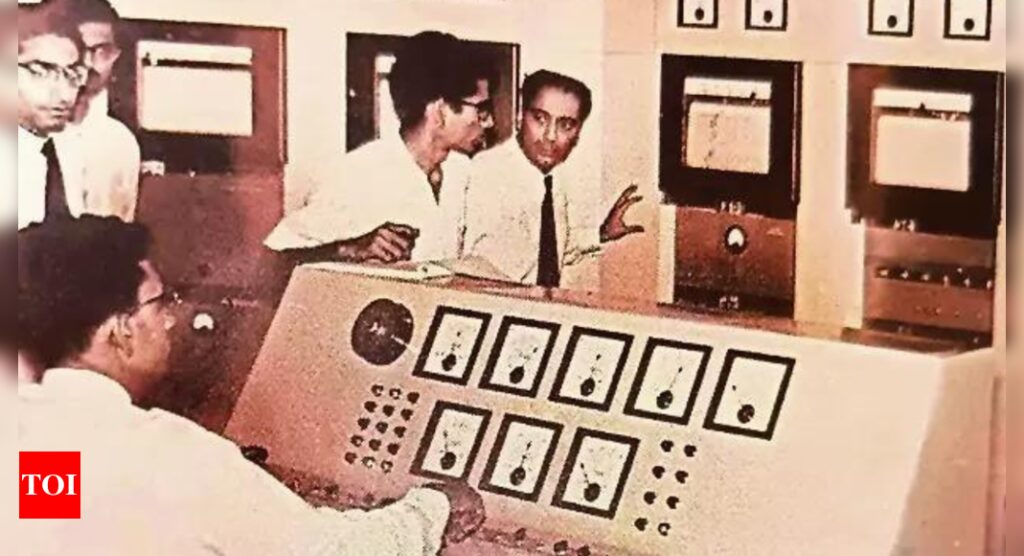[ad_1]
The reactor is Apsara at Bhabha Atomic Research Centre (BARC) at Trombay, which became critical 67 years ago at 3.45pm on August 4, 1956, ushering in the nuclear era for not only India, but Asia as well. It was dedicated to the nation by Jawaharlal Nehru on January 20, 1957. The one megawatt reactor was shut down in 2009 for refurbishment and restarted on September 10, 2018, as Apsara U. Scientists used it for basic research in the fields of nuclear physics, medical application, material science and radiation shielding.
Apsara U was decommissioned a few years later. The museum project has been on the cards for quite some time.
On Saturday evening, prior to the unveiling the memoirs of former Indian nuke chief R Chidambaram, ‘India Rising: Memoirs of A Scientist’, co-authored by Suresh Gangotra, BARC director and chairman of the Atomic Energy Commission A K Mohanty confirmed to TOI: “We are working on converting Apsara into a museum which will provide a glimpse of the history of India’s nuclear programme to the public.”
Saying that it could be a first-of-its-kind project in the world, he added: “The current plan envisages among other things showing the place where Homi Bhabha used to sit in the reactor and also the old BARC training school. We plan to consult officials of the Nehru Science Centre regarding this project.”
Considering that BARC is a high security zone as it is the heartbeat of India’s nuclear weapons programme, the challenge before the planners is how to give public access to the proposed museum without compromising on security. According to a provisional plan, visitors will enter the museum from the south gate of BARC near the refineries.
When asked about the project timeline, Mohanty said it could be a year or little more and refused to divulge more details. “We are still working on it,” he added.
Other officials of the department of atomic energy who spoke to TOI said that once the Apsara museum attains “criticality”, schoolchildren will be brought in batches.
The Apsara reactor figures in the TV serial ‘Rocket Boys’, in which Dr Bhabha played by Jim Sarbh drinks champagne and jumps into the reactor once it becomes operational. It was an example of cinematic liberty.
Former Indian nuke chief M R Srinivasan, in his autobiography ‘From Fission to Fusion’, recalls that Apsara began with a challenge.“Homi Bhabha and John Cockcroft, director of the United Kingdom Atomic Energy Establishment, bet whether Bhabha could commission the first Indian research reactor within 12 months of UK’s agreement to lease out fabricated fuel.”
The department of atomic energy decided on March 15, 1955, to build what is known as a “swimming pool-type research reactor” and finalised the design by July 1955. Srinivasan said Bhabha wanted the reactor to be built entirely in India, except for the fuel elements which had to be imported. He added that the site where Apsara was built featured at one time Sandow Castle, a property belonging to a Parsi family, and a dargah of a Muslim saint. Various units in the city fabricated components for the reactor, like TIFR, the New Standard Engineering Company at Chinchpokli and Mazgaon Docks.
Srinivasan recalled that the first attempt to make the reactor was set for July 31, 1956. “It was a typical monsoon with pouring rain and strong winds. Late in the evening, after a picnic dinner, the startup was attempted.” But it ran into a technical problem. In the second attempt on August 4, 1956, Bhabha said only key personnel should be present in the control room.
Among the visitors to Apsara were former Chinese PM Chou En Lai, the Dalai Lama and Panchen Lama from Tibet and Emperor Haile Selassie of Ethiopia.
[ad_2]
Source link











More Stories
Congress replaces Kamal Nath, names an OBC as Madhya Pradesh chief | India News
Fire breaks out in ITBP camp in Srinagar; none hurt | India News
Parliament Security: Co-villagers give clean chit to Lalit Jha, parents to move court | India News